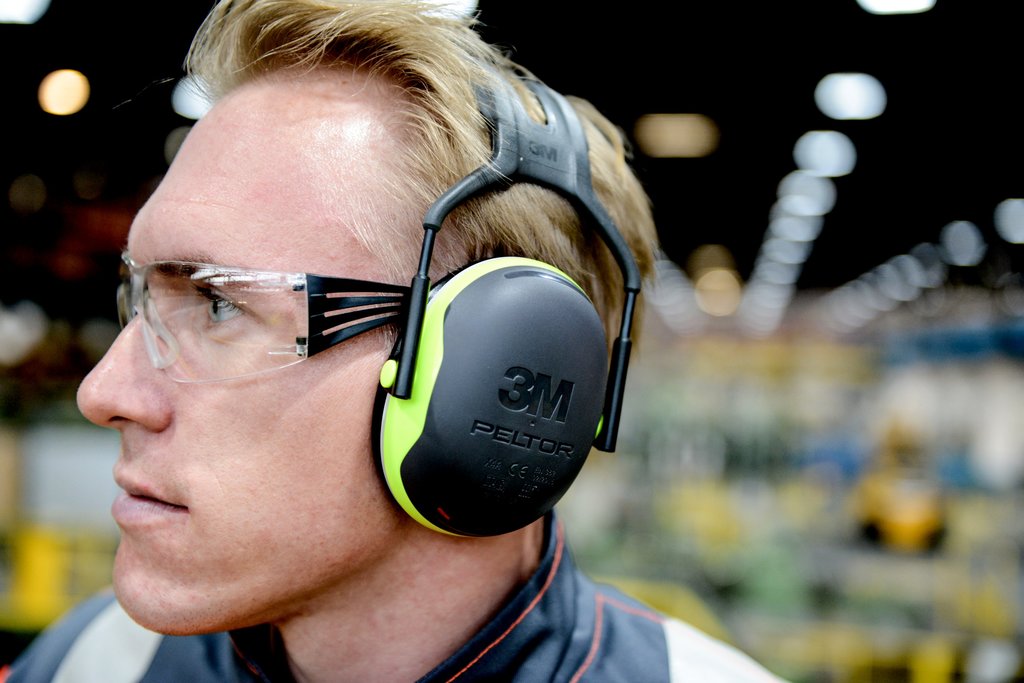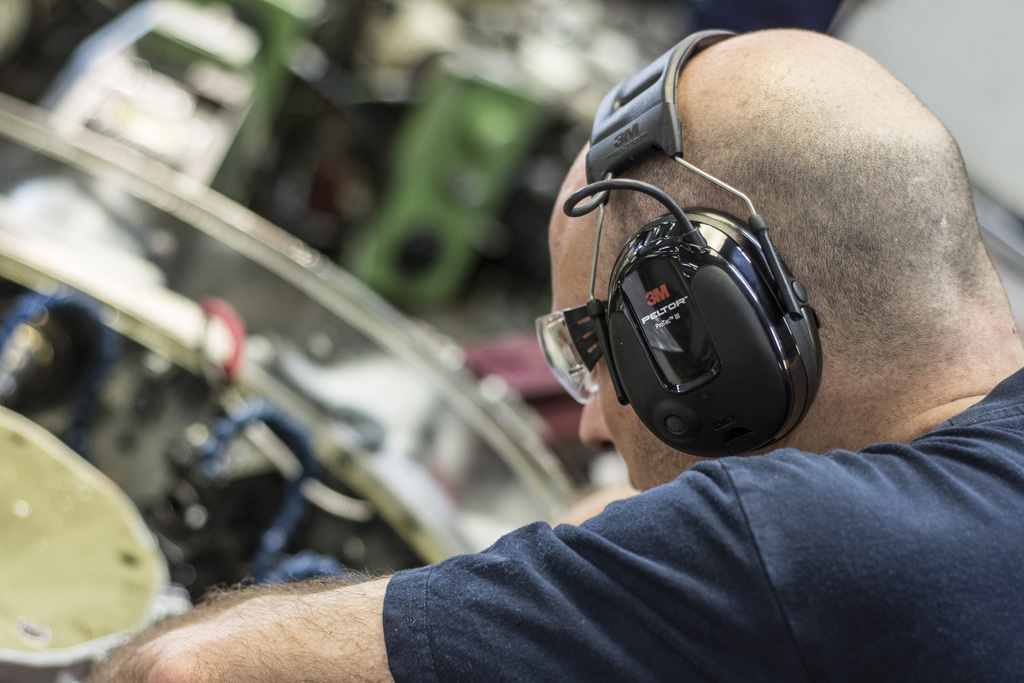
Kelly Rose
Editor

Kelly Rose
Editor
Steven Ellis looks at how level-dependent hearing protection can benefit your workplace.
FOR MANY years, the traditional solution for the protection of workers’ hearing in a noisy workplace has been the deployment of passive hearing protectors of one description or another. Typically, two solutions have been utilised for protecting the hearing of employees exposed to high noise environments.
Disposable and reusable earplugs have offered a low-cost solution and are often well suited to hot and humid environments because they do not cover any part of the head and ears which can radiate excess body heat. Disposable earplugs are generally made from soft foam materials promoting comfort and conformance to the unique shape of the wearer’s ear canals. Reusable earplugs are typically constructed of elastomeric polymers with flexible flanges to provide a good fit within the ear canal. Due to the nature of the materials used, these earplugs can typically be cleaned and reused – so helping to reduce waste.
The second traditional option of passive hearing protection is earmuffs. These are plastic cups attached to an adjustable headband (covering the ears) to help block out sound. They are typically afforded soft, cushion-like seals which provide comfort against the side of the wearer’s head. These devices can also be helmet mounted and used with approved industrial safety helmets. Because there is little skill or training required to place an over-the-ear defender on your head and confirm it is covering your ears, there is a much lower level of uncertainty about the protection it is designed to provide. Earmuffs can also be removed and refitted on multiple occasions without concern about attenuation effectiveness or hygiene. It is worth acknowledging however, that over-the-ear protectors can be prone to compatibility issues with temple arms of eye protection or prescription spectacles. Eyewear with particularly thick temple arms could compromise the earmuff seal and therefore the fit of the hearing protection device.
Within these two types of hearing protection options there are countless variations in styles, shapes, materials and fit. Hearing protection devices approved to EN 352 can provide varying degrees of attenuation protection and it is ultimately up to the employer to decide which level is required to protect the wearer. The notion of providing the right level of protection is often referred to as ensuring personal protective equipment (PPE) is adequate. However, consideration of the PPE being suitable is also critical.
Comfort and communication are key
With such a wide variety of passive hearing protection on offer, there may be myriad options which can provide adequate attenuation to choose from. However, as aforementioned, final selection should also take into consideration the suitability of the product for each individual wearer, the environment(s) they are working in and the task(s) they are performing.
If hearing protectors are not comfortable, easy to use, or they interfere excessively with the ability of workers to hear, the percentage of time that employees wear hearing protection, known as ‘wear time’, may decrease. Hearing protection devices are unlikely to be used if they are not convenient and compatible with the work being done and the clothing and other PPE being worn. In addition, workers not only need to be protected from hazardous loud noise, but they also often need to be able to hear and communicate with others in their working environment, or via radio or telephone with colleagues who are off-site.
Hearing what you want to hear
Inadequate communication can be problematic when workers frequently move from noisy areas to quiet areas during their daily activities.
Assuming workers are likely to need to communicate with others in both noisy and quieter areas during a working day, it is not uncommon to see wearers removing and refitting hearing protection frequently – or indeed not wearing it properly throughout the day. Removal of hearing protection in noisy environments is a clear concern as the protection provided is compromised – even if the protection is removed for a short period of time. In addition, inadequate attention may be paid to refitting devices such as earplugs correctly, compromising the protection provided.
Where communication is key, or indeed preferred by the workforce for morale, the use of hearing protection with level-dependent active listening may be appropriate.
Level-dependent hearing protectors provide greater noise reduction for high level sounds than for low level sounds – this allows a co-worker’s conversation to be heard despite the noise which may be in the working environment.
These types of devices are generally referred to as either Passive or Active. Passive types use non-electronic acoustic filters which allow low level sounds to pass through while attenuating high level sounds. Active types use environmental microphones and electronics to pick up and amplify low level sounds (like a co-worker’s voice). When high level sounds occur, the electronic signal is instantly reduced while the hearing protector helps block out hazardous sounds.
Level-dependent active listening functions within hearing protectors help to avoid overprotection, and the safety and health issues created by it, by enabling the wearer to hear colleagues in their vicinity as well as being aware of their surroundings including machinery, alarms and vehicles.
Level-dependent functionality has been around for many years, but widespread use has been limited, partly due to initial costs of the technology and partly due to lack of understanding of the importance of situational awareness. Increased knowledge of the benefits that level-dependency can provide, including efficiency gains and staff morale, coupled with a decrease in prices have seen an increased demand in industries which perform multiple and varied tasks with a resultant need to communicate better.
Level-dependent functionality works best in situations where the noise is intermittent - for example, on construction sites, foundries or other heavy industries where workers are using power tools and heavy fleet machinery. In these situations, the level-dependent system continuously adapts to the ambient noise levels and enables speech between the periods of high noise.
In environments where there may be continuous high noise or communications required at a distance, more sophisticated radio communications systems may be more appropriate. For these applications there are solutions that include radio communication enabled by a boom microphone. Again, these types of devices provide hearing protection but benefit from this additional functionality.
Support when you need it
Before implementing devices with such communications functionality as discussed above, it is advisable to explore the most suitable options available from your hearing protection equipment specialist. With experience, a specialist in this field should be able to ascertain your requirements and run trials to establish the optimum solution for your workers, their task and environment.
Steven Ellis is an application engineer at 3M Personal Safety Division. For more information, visit www.3M.co.uk/safety




Accounts Payable Dept.
P O Box 201
3M Centre
Bracknell
RG12 8HT
UNITED KINGDOM
08705 360036